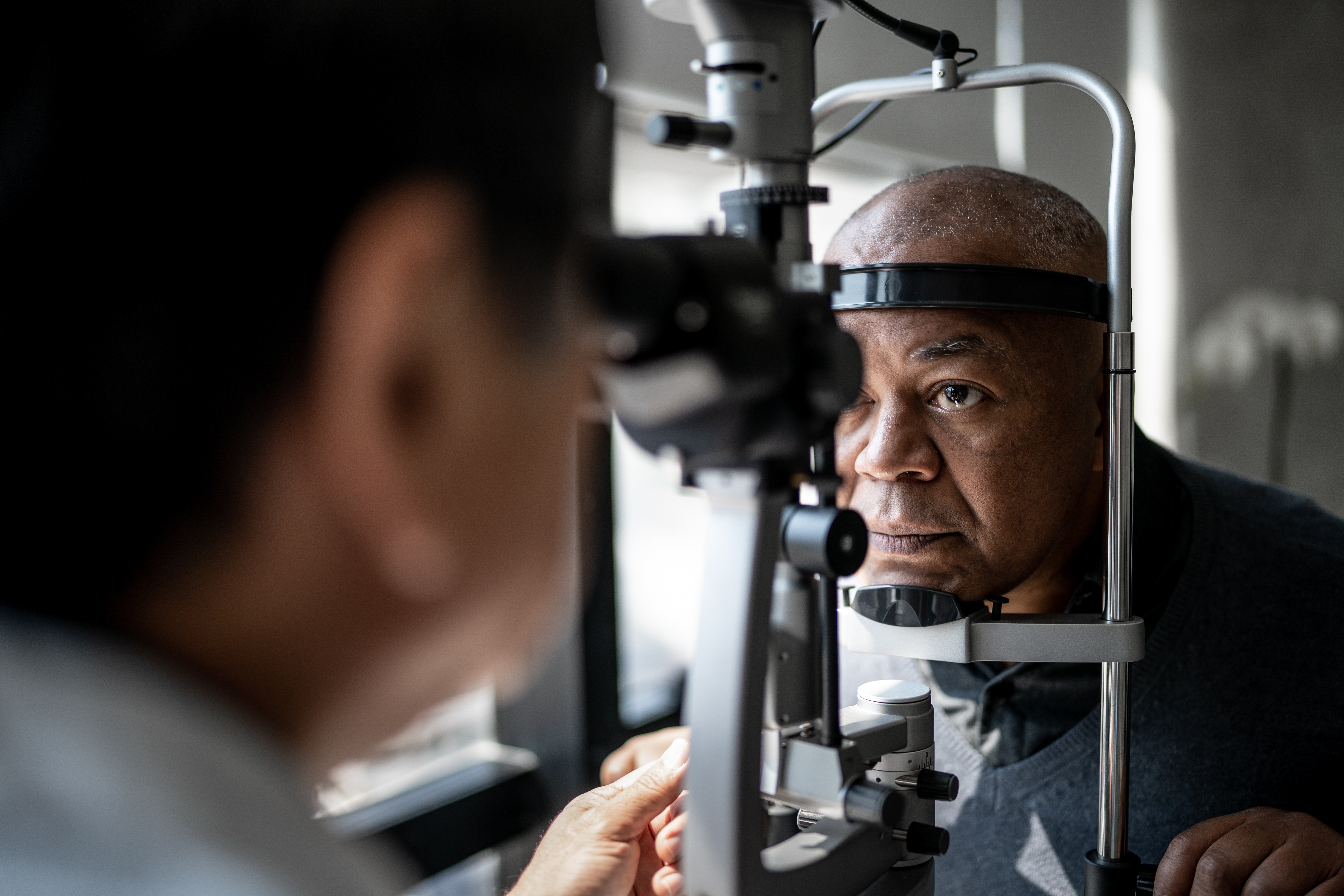 |
|
In this cross-sectional analysis of participants in the MI-SIGHT program, 55% had not had an eye examination in two or more years. Among those who screened positive for glaucoma, cataract, diabetic retinopathy or AMD, 41% to 54% had not undergone an eye exam in two or more years. Photo: Getty Images. |
A recent analysis exploring the underuse of eye care services found that incorporating eye disease screening programs into internal medicine practices in underserved areas could potentially improve the detection and treatment of ocular conditions. This approach, the study authors noted in JAMA Ophthalmology, may help mitigate vision loss in the US.
This population-based, cross-sectional study included adult participants of the Michigan Screening and Intervention for Glaucoma and Eye Health Through Telemedicine (MI-SIGHT) program. Study participants were recruited from primary care clinics serving two low-income communities. This included a free clinic and a federally qualified health clinic (FQHC). They underwent comprehensive eye disease screening and completed surveys that assessed health as well as prior eye care use.
The risk factors for eye disease, according to the study authors, were the following: age 65 years and older, diabetes, personal or family history of eye disease, and self-identifying as Black or African American individuals who were aged 50 years or older. In this analysis, underuse of eye care was defined as no eye exam in two or more years.
The MI-SIGHT program included 1,171 individuals during the first year. The mean age of the participants was 55 years; 24% were 65 years or older. Thirty-eight percent identified as male and 62% as female. In terms of race, 54% self-identified as Black, 10% as Hispanic or Latino and 34% as White.
Forty-three percent of included individuals had a high school education or less, 70% reported an annual household income of less than $30 000, 20% reported having no health insurance and 35% had Medicaid. Additionally, 38% of participants reported having diabetes, 27% had a family history of glaucoma and 5% had a previous diagnosis of glaucoma.
Among individuals who reported not having had an eye exam in two or more years, 21% screened positive for glaucoma, 20% for cataract, 6% for diabetic retinopathy and 1% for age-related macular degeneration. Participants identified the following reasons for why they had not undergone an eye exam: no insurance (28%), no reason to go (22%) and cost of eye exam (16%).
“These results suggest that free eye disease screenings in primary care clinics within underserved communities engaged people at risk of eye disease and underuse of eye care; this approach may enhance eye disease detection and treatment, potentially reducing vision loss in the US,” the study authors concluded.
An invited commentary on this study, also published in JAMA Ophthalmology, delved into the implications of this research while also highlighting the importance of tackling disparities and the underuse of eye care services in the US.
“Overall, the MI-SIGHT program appears to have succeeded in bringing eye care to people who are both in high need of eye care and who otherwise were unlikely to receive it,” the commentators wrote. “However, despite this success, the MI-SIGHT and similar programs supported by external funding are not a panacea for addressing disparities and low use of eye care across the nation.
“Increasing access and use of eye care will likely require large-scale efforts to increase access to and public awareness of affordable eye care,” they stated. “Potential policies to increase eye care include adding Medicare coverage for routine eye care, expanding community-based programs that reach those in need such as MI-SIGHT, and health communications campaigns to educate the public about the benefits of and insurance coverage for vision and eye care.”
Sherman E, Niziol LM, Hicks PM, et al. A Screening Strategy to Mitigate Vision Impairment by Engaging Adults Who Underuse Eye Care Services. JAMA Ophthalmol. August 22, 2024 [Epub ahead of print]. Wittenborn JS, Rein DB. Bringing Eye Care to the People. JAMA Ophthalmol. August 22, 2024 [Epub ahead of print]. |


